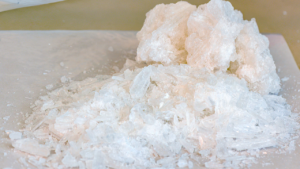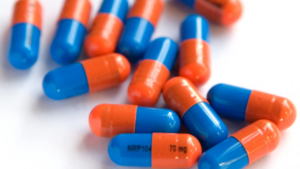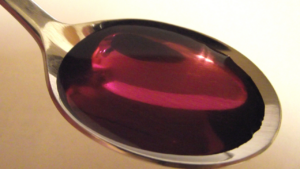How Dangerous Can Too Much Alcohol Be? Let’s Ask Your Liver
Everyone has heard that too much alcohol can be dangerous, but just how dangerous can it be? You’ve probably heard someone say in jest while drinking, “My liver is going to hate me in the morning.” Well, that’s kind of true. Eventually, it can really become a problem. For the most part, those who consume alcohol in moderation will be fine. However, in some cases, those who drink too much may see negative side effects down the road, specifically when it comes to organs like the liver. According to Johns Hopkins Medicine, “The liver regulates most chemical levels in the blood and excretes a product called bile. This helps carry away waste products from the liver. All the blood leaving the stomach and intestines passes through the liver. The liver processes this blood and breaks down, balances, and creates the nutrients and also metabolizes drugs into forms that are easier to use for the rest of the body or that are nontoxic.” Over time, alcohol can wear and tear on the liver, leaving it, in some cases, permanently damaged. But there are steps you can take to help prevent that from happening. Ohio is average when it comes to mortality from chronic liver disease or cirrhosis, with 8.8 out over every 100,000 Ohioans dying of the disease each year, often alcohol related. Let’s take a more in-depth look at alcohol and how it affects the liver.
Alcohol and the Human Body
There’s a specific way alcohol moves through the body, according to the University of California Santa Cruz. The university says, “Once swallowed, a drink enters the stomach and small intestine, where small blood vessels carry it to the bloodstream. Approximately 20% of alcohol is absorbed through the stomach and most of the remaining 80% is absorbed through the small intestine.” Alcohol is metabolized (processed) by the liver, and eventually, the enzymes are broken down. Typically, the liver can break down one ounce of alcohol per hour. If more alcohol is consumed, alcohol builds up in the blood until it can be metabolized. This leads to the intoxicating effects alcohol causes. As mentioned earlier, alcohol can actually damage the liver over time. This is especially true for those who drink excessively or have alcohol use disorder, the medical term for alcoholism. Eventually, these conditions of alcohol misuse may lead to what’s known as alcoholic liver disease.
Liver Damage from Alcohol
According to the U.S. National Library of Medicine (NLM), “Alcoholic liver disease occurs after years of heavy drinking. Over time, scarring and cirrhosis can occur. Cirrhosis is the final phase of alcoholic liver disease. Alcoholic liver disease does not occur in all heavy drinkers. The chances of getting liver disease go up the longer you have been drinking and the more alcohol you consume. You do not have to get drunk for the disease to happen.” There are typically three phases of this disease, starting with a fatty liver. A fatty liver is the building up of fat inside the liver cells, eventually resulting in an enlarged liver. The second phase is alcoholic hepatitis, which is an acute inflammation of the liver, the death of liver cells, and permanent scarring. The third and final phase is alcoholic cirrhosis, which is the destruction of liver tissue, leaving scar tissue instead of much-needed healthy tissue. Alcoholic liver disease is more common for those ages 40 to 50, with men more likely to be diagnosed. That’s not to say women can’t develop the disease as well. Symptoms of alcoholic liver disease include:
- Weight loss
- Stomach pain
- Loss of energy
- Loss of appetite
- Red blood vessels on the skin
- Fluid buildup in the legs and abdomen
- Redness in hands or palms
- Bruising easily
- Abnormal bleeding
- Yellowing of the skin
- Yellowing of the eyes
- Problems thinking
- Shrinking of testicles
- Breast swelling
In some cases, you may not experience any symptoms.
How Is Liver Damage Diagnosed?
Typically, your doctor will conduct a physical exam and view your medical history. They may also perform specific tests to look for any liver damage. These tests can include:
- Blood tests to show whether or not your liver is operating the way it should
- Liver biopsy, which involves removing tissue samples to check for liver disease and damage
- Ultrasound to create a picture of the liver to help identify damage
- CT scan or an MRI to show detailed images of the liver
According to Johns Hopkins Medicine, 30% of people with alcoholic liver disease have the hepatitis C virus, and 50% have gallstones. Studies also show you may be at a higher risk of developing liver cancer. It’s important to be open and honest when talking with your doctor. If you think something is wrong, say something. Before your visit, make sure to write down any questions you have, have a list of medications you’re taking, ask what to expect, or anything else you can think of.
Preventing Liver Damage and Other Harmful Effects of Alcohol
Liver damage and diseases caused by alcohol can be prevented in most cases. Since these conditions are typically caused by excessive drinking, limiting your alcohol intake can help. Excessive drinking consists of binge drinking and heavy drinking. Binge drinking occurs when women have four or more drinks on a single occasion, or when men have five or more drinks on a single occasion. Heavy drinking is defined as having eight or more drinks a week if you’re a woman, or 15 or more drinks a week if you’re a man. According to the Centers for Disease Control and Prevention (CDC), “To reduce the risk of alcohol-related harms, the 2020-2025 Dietary Guidelines for Americans recommends that adults of legal drinking age can choose not to drink, or to drink in moderation by limiting intake to two drinks or less in a day for men or one drink or less in a day for women, on days when alcohol is consumed.” Right now, two-thirds of adults who drink admit to drinking above these moderate levels. Liver problems aren’t the only consequence of drinking too much. Excessive drinking can also cause:
- Various injuries
- Problems for pregnant women
- Alcohol poisoning
- High blood pressure
- Heart disease
- Stroke
- Cancer
- Problems with the digestive system
- Weakened immune system
- Social problems
- Problems at work or school
- Mental health disorders
- Financial problems
Some people shouldn’t even be drinking at all, especially if you are:
- Pregnant or planning to become pregnant
- Under the legal drinking age of 21
- Diagnosed with a medical condition that does not mix well with alcohol
- Taking medications that shouldn’t be mixed with alcohol
- Recovering from alcohol use disorder
Overall, if you’re drinking in moderation, you’re lowering your risk of damaging your liver/developing a liver disease, or dealing with common negatives associated with alcohol.
What Is Alcoholism/Alcohol Use Disorder?
Alcohol use disorder (AUD) is a serious health issue that causes strong cravings to drink, the inability to stop drinking once you’ve started, and irritability when you’re not drinking, according to the NLM. You may be battling AUD if in the past year you:
- Felt strong urges to drink
- Ended up drinking more than you expected
- Ended up drinking longer than you expected
- Spent a lot of time recovering from drinking
- Kept drinking despite the negative effects it’s having on your life
- Quit pursuing activities you once enjoyed because of alcohol
- Found yourself in dangerous situations because of alcohol
- Had to drink more to feel the effects of alcohol
- Had problems at work or school because of alcohol
- Had the urge to quit drinking but couldn’t
- Experienced withdrawal symptoms when not drinking
These are all telltale signs of the condition. If you’re experiencing any of these symptoms, there’s a good chance you’re battling AUD. According to the Substance Use and Mental Health Services Administration, slightly more than 10% of Ohioans struggle with alcohol use disorder.
Symptoms of Alcohol Withdrawal
Symptoms of alcohol withdrawal present themselves when you suddenly stop regularly drinking a significant amount. These symptoms can be uncomfortable and sometimes severe. These symptoms usually begin within eight hours after your last drink, the NLM says. However, they can begin days later. Symptoms typically peak between 24 and 72 hours. They can last for weeks. Symptoms might include:
- Depression
- Fatigue
- Anxiety
- Irritability
- Sweating
- Headache
- Trouble sleeping
- Nightmares
- Nausea and vomiting
- Rapid heart rate
- Enlarged pupils (the black parts of the eyes)
- Mood swings
- Tremors
In some cases, what’s known as delirium tremens (DTs) may occur. This is a severe form of alcohol withdrawal that may include fever, seizures, hallucinations (seeing or hearing things that aren’t there), and agitation. Delirium tremens is a medical emergency. If someone is showing signs of DTs, call 911.
Help Is Out There
”Life is not easy for any of us. But what of that? We must have perseverance and, above all, confidence in ourselves. We must believe that we are gifted for something, and that this thing, at whatever cost, must be attained.” – Marie Curie
Are you constantly struggling with alcohol? Do you want to leave alcohol behind but can’t? Have you reached the point where you simply want to take your life back? You’re not alone. Plenty of people have been in your position before. Just like them, you have the power and opportunity to overcome alcohol use disorder. In school, you were given some of the tools needed to succeed in life. By seeking professional alcoholism treatment, you can learn the tools needed to live a life in recovery. You can change your thought process and learn how to substitute positive behaviors and outlets for your addiction. There is no shame in asking for help. At some point, we all need it. And there’s always someone, somewhere willing to help.
Call The Bluffs Today
Here at The Bluffs, we understand your situation is unique, which is why we create alcohol use disorder treatment plans just for you. Our inpatient alcohol rehab program will address the symptoms of your addiction and daily-life contributors that may affect it. We use evidence-based treatments like cognitive behavioral therapy and dialectical behavior therapy to help change thoughts and behaviors that lead to unwanted or unhealthy habits. We also offer recreational activities as a healthy alternative to alcohol. To learn more, call (888) 481-7821.
Frequently Asked Questions
What are the first signs of liver damage from alcohol? There are three phases of liver damage with the first being a fatty liver, which means fat is building up inside the liver cells. This eventually results in an enlarged liver. The second phase is alcoholic hepatitis, which is an acute inflammation of the liver, the death of liver cells, and permanent scarring. The third and final phase is alcoholic cirrhosis, which is the destruction of liver tissue, leaving scar tissue instead of much-needed healthy liver tissue. Symptoms of alcoholic liver disease include:
- Weight loss
- Stomach pain
- Loss of energy
- Loss of appetite
- Red blood vessels on the skin
- Fluid buildup in the legs and abdomen
- Redness in hands or palms
- Bruising easily
- Abnormal bleeding
- Yellowing of the skin
- Yellowing of the eyes
- Problems thinking
- Shrinking of testicles
- Breast swelling
If you think you have liver damage, it’s best to consult with a medical professional. They will be able to get a proper diagnosis. Can the liver repair itself after years of drinking? It all depends on how far along things are. In the early stages, the liver has the potential to heal itself, but once it has gotten to the point of cirrhosis, it can’t be reversed. If you have any concerns, speak with your doctor. If you do have liver damage, they’ll be able to determine how far along it is and what options you have. How long does it take for a person with alcoholism/alcohol use disorder to get liver damage? Everyone is different, which means liver damage can occur at different points in people’s lives. However, statistics show that the first signs usually pop up in your 40s or 50s. Liver damage is commonly seen in those who drink excessively.







